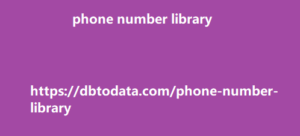As SEO professionals, we are obligated to fulfill this duty through appropriate practices in digital marketing. We should resort to being more creative in our craft and abstain from the tempting boost in rankings that the SEO spam methods offer. If you want to learn more about how to recover from Google Penalizing your website, try checking out our guide on How to Fix Google Penalties. Share on: . The quality of the emails being sent to webmasters can be affected by the simple things you probably don’t even think about. why you get frustrated thinking of what more you can do to make successful outreach campaigns. Next time you are about to hit that Send button, try to take a second look – not at the content but at how you package your message to the webmasters.
Do you look and sound credible
trustworthy, and knowledgeable? If your answer is yes to all three, then you might just get your hard-earned link. Have any link building outreach email tips you want to share? Comment down below and see what others think of them! Clear and Visible Call To Action (CTA) There are many tools out there, but one of the most reliable tools that I personally use in tracking a website’s SEO is Screaming Frog. Title tags are being forcibly replaced by Google. For sure you have noticed this if you have been paying attention to your website’s search rankings. Here’s what you can do about it now and how you can make it work to your advantage.
This is a follow-up to Google’s core and
helpful content update rollout last September. The Google search results update involves: Replacing title tags with site names Favicon’s (website’s logo or icon) expanded size and shape The prominence of search ads’ label to “Sponsored” in bold black text Why Google Made This New Search Results Update According to Google, adding site names to search results on mobile will enable users easily identify websites associated with each result. This update will also help users make sense of the information they see in the search results at a glance. Do take note that this feature is only available for Google mobile search results in English, German, French, and Japanese languages as of today.
Also, this feature currently only supports
home pages at the domain level, not at the subdirectory level. a screenshot of a replaced title tag As you can see, when I did a mobile search for SEO Hacker, it showed the search engine results page (SERP) with the name of our website. It also showed the company’s favicon and breadcrumbs at the same time. However, when I did a non-branded keyword mobile search (I typed “SEO Philippines”), the title tags still showed in the SERP. non-branded keyword sample It’s also worth noting that when you type the brand name and its related keywords, title tags will still show in the SERP. Looking at the examples above, you will see a website name and the URL for each result.
This brings a better context of what websites
you see, so you can be confident austria phone number library of the websites you are visiting. I also did notice that the size and shape of the website’s favicons have changed, making it easier for brands to be visible. Finally, Google made sure that the paid ads in the search results are visible enough for the users to see by changing the ad notifier from “Ads” to “Sponsored.” What You Need To Know About This Feature Update Some SEO experts like myself get all worked up whenever Google updates its algorithms. Looking at the majority of Google’s past update rollouts, they have greatly impacted the volatility of website rankings. As an SEO professional, you should always stay abreast of 4Google’s updates, hence this article.
Replacing Title Tags With Site Names
Firstly Google’s process for generating site names on the Google Search results page is completely automated. Both the content of your website and references to it are also taken into account by Google. To automatically generate your site name, Google uses the following sources from your website: site name structured data Looking at the following sources Google uses to generate your site name highlights the extreme importance of adding or improving the structured data of your website. Structured data is a format used to organize information on a website. This format can help search engines understand the contents of a page and provide more relevant results to users. Additionally, it triggers knowledge panels, featured snippets, and event snippets, making SERPs more informative.
When it comes to this new search
results update, Google uses email protocols explained in simple terms the Website structured data type, specifically the “name” property, to determine the name of the website. Do take note that the structured data must be displayed on your website’s home page. To learn how to add structured data to your homepage, you can go to SEO Hacker’s guide on how to create structured data. You can also find the technical and content guidelines for adding Website Structured Data through this link. Favicon’s Expanded Size and Shape As mentioned earlier, the size and shape of the website’s favicons have changed. They’re expanded, which makes it easier for brands or companies to be visible on the search results page.
Although a favicon does not have much
bearing on SEO, it’s still important canada data for brand recognition and attracting users. Favicons also let search users easily distinguish your brand from your competitors. Google search results can include your favicon if you have one for your website. However, there are guidelines on how to make your website eligible for a favicon. You can read about the guideline here. This guideline will also show you how to implement favicons and show up properly in SERP. How Is Google’s New SERPs Update Important to SEO Google’s new search results elements that help search algorithms understand what your webpage is about.

